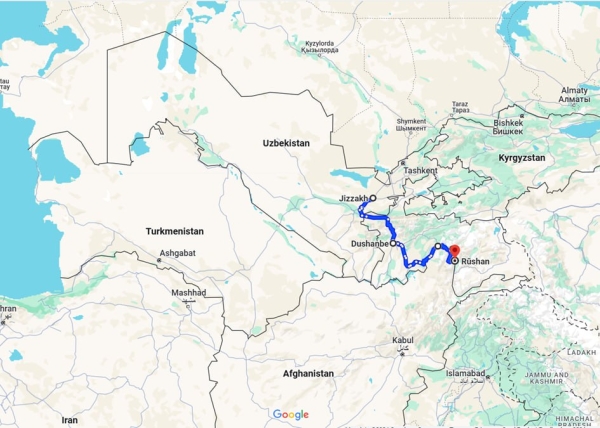In recent years, China has shown growing interest in expanding its presence in Central Asia, driven by strategic initiatives aimed at increasing its influence through infrastructure and production partnerships, as per Eldaniz Gusseinov, a Non-Resident Research Fellow at Haydar Aliyev Center for Eurasian Studies of the Ibn Haldun University, Istanbul.

One example of this is the signing of several agreements between China and Tajikistan during Chinese President Xi Jinping’s visit to Tajikistan in July. The agreements focus on the construction and mining sectors, signifying China’s intent to enhance its supply chains in the region to support large-scale transport projects linking Kyrgyzstan, Tajikistan, and Afghanistan.
Before Xi Jinping’s visit to Tajikistan, a milestone occurred in Uzbekistan with the opening of a BYD electric vehicle (EV) factory in the city of Jizzakh on June 27. This factory, a joint venture with Uzbekistan’s UzAutoSanoat, marks BYD’s first production facility outside China. The plant is expected to produce up to 50,000 vehicles annually, with plans to scale production to 200,000 cars in the second phase and potentially 500,000 in later stages.
During a presentation to Uzbek President Shavkat Mirziyoyev on July 10, Ulugbek Rozukulov, the head of UzAutoSanoat, outlined plans to further integrate BYD production into Uzbekistan’s automotive landscape. The focus of the meeting was on boosting production and localization of parts, which includes key components such as batteries that rely on rare earth metals sourced from Tajikistan and Afghanistan.
China’s Motives Behind Central Asian Partnerships
China’s interest in expanding its production footprint in Central Asia is driven by several factors:
- Expanding Car Exports to Turkey and Europe: China aims to use Central Asia as a hub to export vehicles to Turkey and the European Union, leveraging the region’s strategic location and economic potential.
- Securing the Central Asian Market: By investing in infrastructure, such as roads and factories, China seeks to secure long-term dominance in Central Asian markets and prevent competitors from gaining a foothold.
- Building Regional Supply Chains: China is working to integrate Central Asia into its global supply chains, particularly as it faces trade restrictions from the West. By strengthening ties with regional countries, China ensures access to raw materials like lithium, crucial for battery production, and creates smoother trade routes for its products.
Infrastructure Investments in Tajikistan
A key part of China’s strategy involves the development of transport infrastructure in Tajikistan. During Xi’s visit, discussions with Tajik President Emomali Rahmon centered on mining rare earth metals and improving transportation routes across the mountainous terrain. The Kalay-Khumb – Vanj – Rushan route, a vital stretch for regional connectivity, is undergoing reconstruction to enhance transport between China, Afghanistan, Tajikistan, and Uzbekistan, ultimately facilitating the movement of goods, including electric vehicles from the Jizzakh plant.
China Road and Bridge Corporation (CRBC) is responsible for reconstructing the 109 km section, with plans to reduce the length to 92 km by building two tunnels. The project is funded by a $230mn grant from the Chinese government and includes the construction of a two-lane road, 15 bridges, and a gallery. The reconstruction is scheduled for completion by the end of 2024.
In parallel, efforts are underway to secure financing for the remaining sections of the Dushanbe-Khorog-Kulma highway, a crucial 1,008 km road linking Tajikistan and China. This highway will play a vital role in connecting the regional production network, including China’s industrial hubs and Central Asia’s emerging markets.




